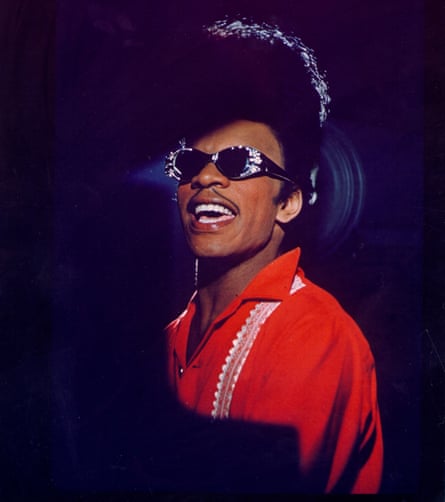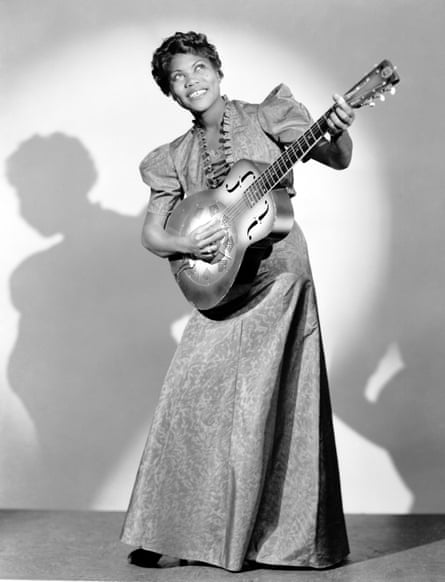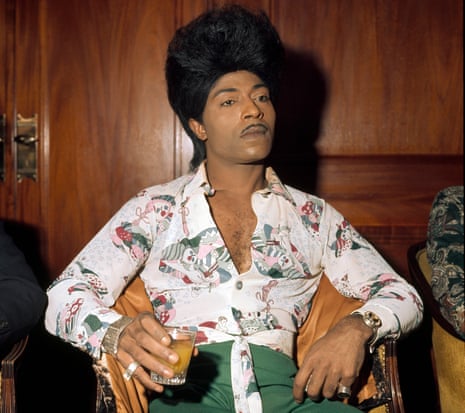As the world marks and mourns the passing of Little Richard, many have been asking: how was someone so unapologetically black and queer present at the origins of rock, a world-shaking music still associated, to this day, with white male musical acts like the Beatles and the Rolling Stones?
All these artists and more, including Bob Dylan in a Twitter thread, would be quick to acknowledge Little Richard’s formative influence on them. But “influence” is perhaps too weak a word here. Rock’n’roll history has never exactly neglected or ignored Little Richard: it just has never quite known what to do with him. The longstanding pissing contest over who can claim the title “King of Rock’n’Roll” – Elvis? Jerry Lee Lewis? – is a case in point. While his authorised biographer went celestial in choosing to style Richard “the Quasar of Rock”, perhaps we might do better to listen to the artist, introducing himself at the Club Matinee in Houston, Texas, in 1953: “Little Richard, King of the Blues … and the Queen, too!”
Might we hear in this brash boast an invitation to think in non-binary terms about Little Richard’s place in black musical history? At 20 Little Richard was already a showbiz veteran of half a decade, performing first as a turbaned mysterio and then as a drag queen named Princess LaVonne in the travelling shows that plied the southern black entertainment circuit of the late 1940s. Other queens and “freakish men” – as the black speech of the period named gender-non-conforming males – taught Little Richard the musical, performative and sexual ropes: performers like Esquerita, whose flamboyant persona and piano technique inspired Richard (the question of who wore the pompadour first will probably go for ever unanswered).

These transgressively queer performers of a bawdy, sped-up blues, and the black publics they performed it for, were overlooked by a generation of white male critics and collectors eager to fetishise the rural: Robert Johnson standing at a lonesome crossroads in the Mississippi Delta. As historian Marybeth Hamilton notes, rock’n’roll was thought by these critics to be “a factory product that diluted, even perverted, black performance traditions for sale to undiscerning consumers who, if anything, preferred the fake stuff to the real”.
Yet the urban blues – in which black women’s voices and concerns had been central since the 1920s – supplied the soundtrack to a black sexual underground that was remarkably widespread, durable, and even popular in the Jim Crow era. Take the jump blues of Billy Wright, the “slow drag” vocal style of Big Maybelle, or the “hip shakin’ mama” Patsy Vidalia, the drag queen who MCed New Orleans club the Dew Drop Inn and threw the city’s annual Gay Ball. Although the crossover from this rhythm and blues to rock’n’roll might have meant the loss of an audience that knew the song Lucille was about a drag queen, or that Tutti Frutti began as an ode to anal sex, the frank and exuberant world from which they – and Little Richard – sprang, has left plenty of evidence for black feminist, queer, and trans musical histories to uncover (and for motivated digital crate-diggers to seek out).
Any understanding of Little Richard’s career has also been inhibited by the tendency to see individuals – and history itself – as always moving from the narrowly religious towards the wider secular world. The almost universal dismissal of Little Richard’s gospel output by rock critics is a case in point. One suspects that this dismissal is motivated by the artist’s own declaration that his gospel records and ministerial career represent a recantation of his wild and wayward life as a rock’n’roller; the prodigal son’s return.

But, although Richard did indeed originally leave his religious household in Macon, Georgia, in order to perform the bawdy and profane music it prohibited, he retained a lifelong devotion to the church, and its gospel is arguably as fundamental to grasping his sound as his secular influences. A non-binary history would highlight the decisive influence on Little Richard of the guitar-swinging gospel performer Sister Rosetta Tharpe, whose career was a series of rebellions against the strictures placed upon women within the church and black people in America. He may not have known that Sister Rosetta also took same-sex lovers, but he did remember that she gave him his first paying gig when she invited him, aged just 14, to open for her show in Macon.
Indeed, the separation between secular and sacred performance – no matter how fiercely it tends to be enforced on either side – might need to be bridged in order to truly appreciate the ecstasy in Little Richard’s sound. In all the hollerin’ and screamin’ that earned young Richard the nickname War Hawk while singing in church as a child, we might hear an “aesthetics of possibility” as scholar Ashon Crawley terms it in his book Blackpentecostal Breath. He writes of a collective breathing practice particular to Pentecostal worship – with its signature ecstatic method of “speaking in tongues” – and holds it up as an inexhaustible and improvisatory response to brutal violence against black bodies, past and present. Little Richard rattled the dance halls with the power of this breath.
When Little Richard died, among the remembrances I read was one from the queer performance artist Ron Athey (also brought up in the Pentecostal church), of the gift of a religious tract that the star offered when they met in Los Angeles. I also recall Richard’s offerings of tracts and ministry after his rock concerts, like the one I attended at BB King’s Bar and Grill in 2007. As different as his recorded rock and gospel output might sound, there is also something unified – what I would term blackqueer – in the continuous breath with which he voiced them both.
Like many of my generation, born in the 1970s, I first became aware of Little Richard when he effectively snatched the wig off the Grammys in 1988. Invited to announce the best new artist award, he brought the audience to their feet by castigating the Recording Academy’s failure to ever give him an award, which he proceeded to remedy by repeatedly announcing himself as the winner. At the time I was anxiously torn between nominees Jody Watley and Terence Trent D’Arby (Watley won), so I mistook Richard to be a campy relic from another era. Rewatching this scene now on YouTube, I see a masterclass in how to take up a space that you have already earned more than twice over. I hear the connections between the femme emancipation in Little Richard’s wayward Lucille (“You won’t do your sister’s will”) and Watley’s independent 80s woman “looking for a new love”. I understand how much of the DNA for D’Arby’s soulful rock stomp and vocal pyrotechnics on a song like Dance Little Sister comes from one like Little Richard’s Good Golly, Miss Molly.
Rock’n’roll, legend has it, helped integrate America in the 1950s. The scene Little Richard made at the 1988 Grammys was a caution against thinking about music history in such progressive, putatively post-racial terms. He instead called attention to the ways in which black innovation can get reduced to what historian Shane Vogel called “black fad performance”: novelty that can be quickly consumed and then forgotten. From Harry Belafonte’s Calypso in the 1950s to black TikTok dancers today, blackqueer performers are especially vulnerable to being received as fabulous but disposable. History gets sorted out into who counts and who doesn’t.
As white nationalism has returned to the corridors of power in the US, challenging easy tales of historical progress, we all could do well to consider the inspiriting power of blackqueer Pentecostal breath, and the way it allows those who breathe it to survive, resist and flourish. I think about the massive Beaux Arts train station in Macon, Georgia, designed by the same architect as New York City’s Grand Central Station, a monument to the segregated world that Little Richard Penniman was born into. The sign designating the “colored waiting room”, to the left side of the main entrance to the grand hall, is literally chiselled in stone, as confident a prediction of the permanence of white supremacy as one could imagine. The layout of the station clearly indicated the subordinate position black Americans had in the country that they built. But in the margins of this grand design, another plot was always brewing.
When I travelled to Macon to research Little Richard’s early years, I was taken aback by the still intimidating grandeur of this now-shuttered edifice. And I was awed to think how a skinny kid from the Pleasant Hill neighbourhood, teased for his limp and effeminate manner, might have found within his small frame a voice like Joshua’s, fit to bring the walls of this modern Jericho tumbling down.
